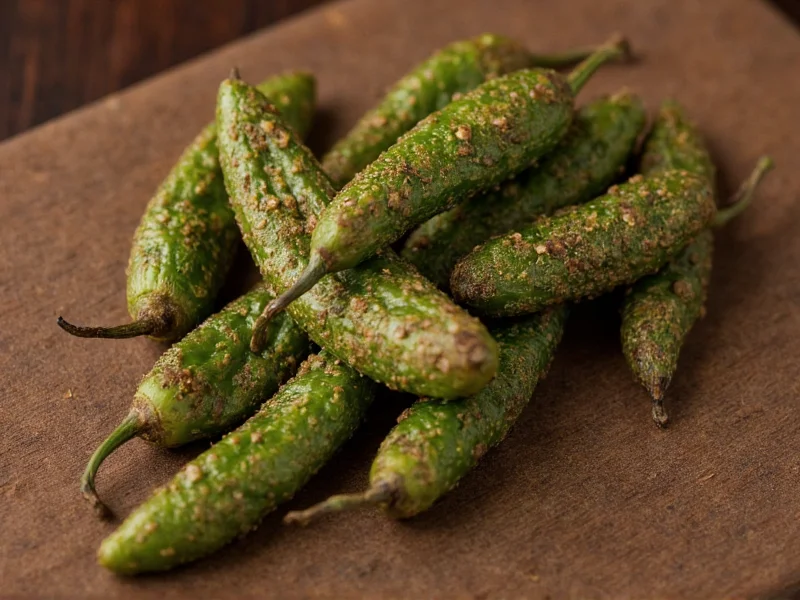Understanding the difference between chipotle and simple dried jalapeños is essential for authentic Mexican cooking and proper flavor development in recipes. While both start as fresh jalapeños, their processing methods create dramatically different culinary products with unique flavor profiles and applications.
What Exactly Is Chipotle?
The term "chipotle" comes from the Nahuatl (Aztec) language, combining "chil" (chili pepper) and "poctli" (smoked). This etymology reveals the critical element that defines chipotle: the smoking process. True chipotles undergo a specific transformation where ripe red jalapeños are slowly smoke-dried over wood fires, traditionally using mesquite or oak.
This smoking process typically takes 3-5 days and serves multiple purposes: it preserves the peppers, concentrates their flavor, and imparts that signature smoky character. The resulting chipotle peppers have a deep reddish-brown color, leathery texture, and complex flavor profile that balances heat with smokiness and subtle fruitiness.
Chipotle vs. Dried Jalapeño: Key Differences
| Characteristic | Chipotle | Dried Jalapeño (Seco) |
|---|---|---|
| Processing Method | Smoke-dried over wood fires | Air-dried or sun-dried |
| Flavor Profile | Smoky, earthy, complex with subtle sweetness | Grassy, vegetal, straightforward heat |
| Color | Deep reddish-brown to almost black | Bright red to brick red |
| Texture | Leathery, slightly moist | Crisp, brittle |
| Heat Level | Moderate (2,500-8,000 SHU), mellowed by smoke | Moderate (2,500-8,000 SHU), sharper heat |
The Smoking Process: What Makes Chipotle Unique
The traditional method of making chipotles involves placing ripe red jalapeños on racks above a low-burning wood fire. The peppers are exposed to smoke at temperatures between 120-150°F (49-66°C) for several days. This slow process allows the smoke to penetrate deeply while gradually removing moisture.
During this smoking period, chemical changes occur that transform the peppers' flavor compounds. The smoke introduces phenolic compounds that interact with the capsaicin (the compound that creates heat in peppers), creating that distinctive chipotle flavor that cannot be replicated by simply drying jalapeños.
Common Chipotle Variations
When shopping for chipotles, you'll encounter several forms:
- Whole dried chipotles - The traditional form, used for rehydrating in sauces or stews
- Chipotles in adobo sauce - Rehydrated chipotles preserved in a tangy tomato-based sauce with vinegar and spices
- Chipotle powder - Ground dried chipotles, often mixed with other spices
- Chipotle flakes - Crushed chipotle peppers
It's important to note that "chipotle powder" sold commercially sometimes contains additional ingredients beyond just ground chipotles, which can affect flavor authenticity in recipes.
Culinary Applications: When to Use Chipotle vs. Dried Jalapeño
The distinctive smoky flavor of chipotle makes it ideal for dishes where that characteristic taste enhances the overall profile:
- Barbecue sauces and rubs
- Mole sauces
- Bean dishes and chili
- Marinades for meats
- Smoky salsas
Dried jalapeños (often labeled as "jalapeño seco" or "dried jalapeño") work better when you want pure pepper heat without smokiness:
- Traditional Mexican salsas
- Some mole varieties
- When a cleaner, more vegetal pepper flavor is desired
Debunking Common Misconceptions
Several misconceptions persist about chipotles:
- Misconception: All dried jalapeños are chipotles
Reality: Only smoke-dried jalapeños qualify as true chipotles - Misconception: Chipotle is a specific pepper variety
Reality: Chipotle refers to the processing method applied to jalapeños - Misconception: Chipotles are significantly hotter than fresh jalapeños
Reality: The heat level remains similar, though the smoke can make the heat feel different
How to Identify Authentic Chipotle Products
When purchasing chipotles, look for these indicators of authentic products:
- Packaging that specifies "smoke-dried" rather than just "dried"
- Deep reddish-brown to nearly black color (not bright red)
- Leathery, slightly flexible texture (not brittle)
- Distinct smoky aroma when opened
- Ingredients listing only "smoke-dried jalapeños" (for pure chipotle products)
Be cautious of products labeled as "chipotle" that are bright red or have a grassy rather than smoky aroma, as these are likely just dried jalapeños mislabeled for marketing purposes.
Substituting Chipotle in Recipes
If you don't have chipotles but need that distinctive flavor, consider these substitutions:
- For dried chipotles: Use smoked paprika plus a fresh jalapeño (though this won't be identical)
- For chipotles in adobo: Try smoked paprika, tomato paste, vinegar, and a fresh jalapeño blended together
- For chipotle powder: Mix smoked paprika with cayenne pepper in a 3:1 ratio
Remember that these are approximations—nothing truly replicates the complex flavor of authentic smoke-dried chipotles.











 浙公网安备
33010002000092号
浙公网安备
33010002000092号 浙B2-20120091-4
浙B2-20120091-4